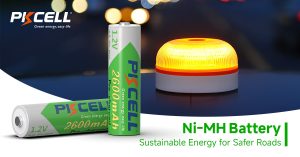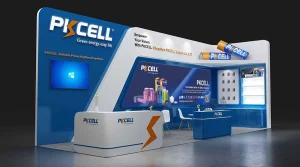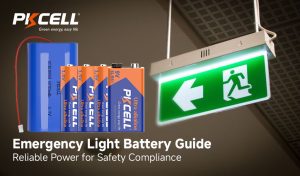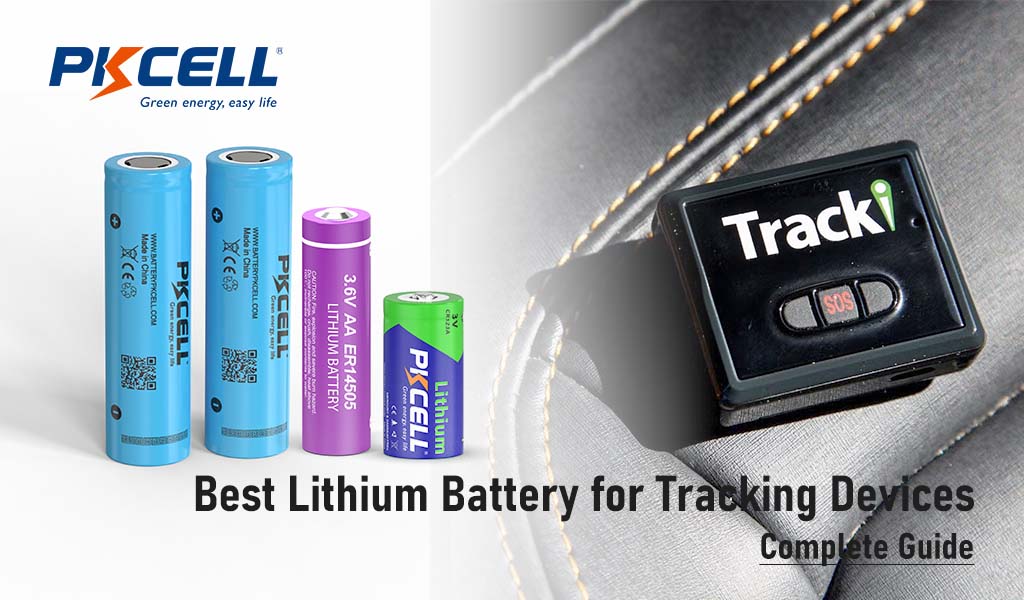
Introduction: Why Battery Choice Matters for Tracking Devices
GPS trackers are widely used in areas like fleet management, cold chain logistics, agriculture, and asset monitoring. Each application has its own unique demands, but they all share a common need: batteries that deliver long-lasting power. For industries that depend on GPS trackers and other IoT monitoring solutions, selecting the right battery can significantly impact operational efficiency and reduce costly downtime. This need drives the preference for lithium-based batteries—batteries that won’t quit when they’re needed most.
Key Performance Requirements for Tracking Device Batteries
Long Operating Life Without Maintenance
One of the most critical requirements for tracking device batteries is a long operating life. They need to last 5 to 10 years without needing maintenance or replacement. Industrial deployments often involve thousands of devices installed in hard-to-access locations, making frequent battery swaps costly and impractical. A battery with an extended shelf life and ultra-low self-discharge rate ensures devices stay powered for years, reducing operational overhead and risk of device failure.
Szeroki zakres temperatur pracy
Tracking devices often operate outdoors or in harsh environments where temperatures can fluctuate dramatically. Batteries that support a broad temperature range are indispensable for applications like cold chain logistics or desert monitoring. Extreme cold can reduce battery capacity and output voltage, potentially causing device failures in critical situations. Therefore, a lithium battery designed to withstand extremes ensures the tracker continues to provide accurate, real-time data without interruption.
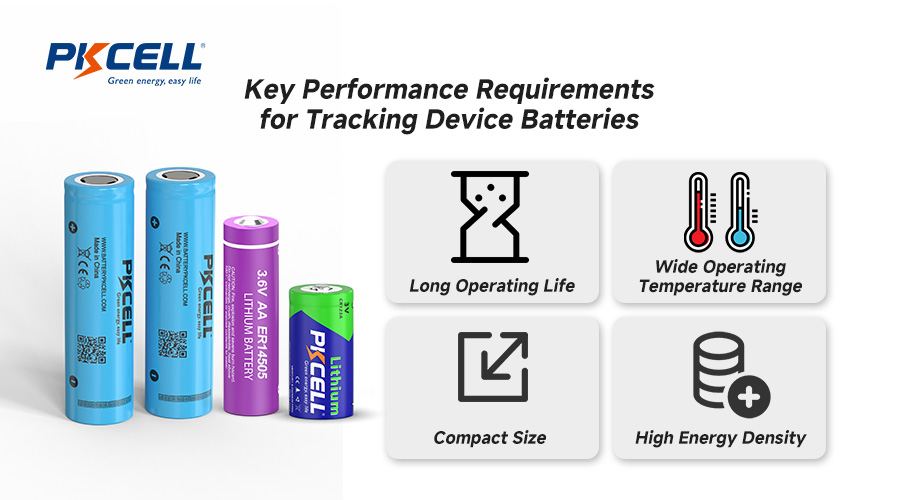
Compact Size & High Energy Density
Space is often at a premium for tracking devices. Small GPS trackers embedded in vehicles, wildlife collars, or handheld devices require batteries that deliver high energy density without occupying excessive volume or weight. Common form factors like the 18650 cylindrical cells, ER14250, or customized battery packs provide the right balance of size and capacity. High-energy density batteries maximize the power stored in a small footprint, extending the runtime of devices without enlarging their physical dimensions. The applications using these batteries enhance user comfort or device concealment.
Lithium Battery Chemistries for Tracking Devices
Selecting the right lithium battery chemistry is a pivotal decision that impacts device performance, lifespan, and cost. The three main lithium chemistries commonly used in tracking devices are Lithium Thionyl Chloride (Li-SOCl₂), Lithium Manganese Dioxide (Li-MnO₂), and Lithium-Ion rechargeable batteries. Each has distinct advantages and trade-offs.
Lithium Thionyl Chloride (Li-SOCl₂) Batteries
Lithium Thionyl Chloride batteries stand out for their ultra-long life and remarkably low self-discharge rate. These characteristics make them the gold standard for tracking devices that require maintenance-free operation over many years. ER-series cells such as ER14250 and ER34615 are common choices. They provide stable voltage output and excellent performance across a wide temperature range.
Their chemistry enables a consistent and reliable voltage level, which helps ensure device electronics operate smoothly without voltage drops. This makes them ideal for industrial GPS trackers, asset monitoring, and cold chain logistics where uninterrupted operation is vital.
Quote for PKCell Li-SoCl2 Battery
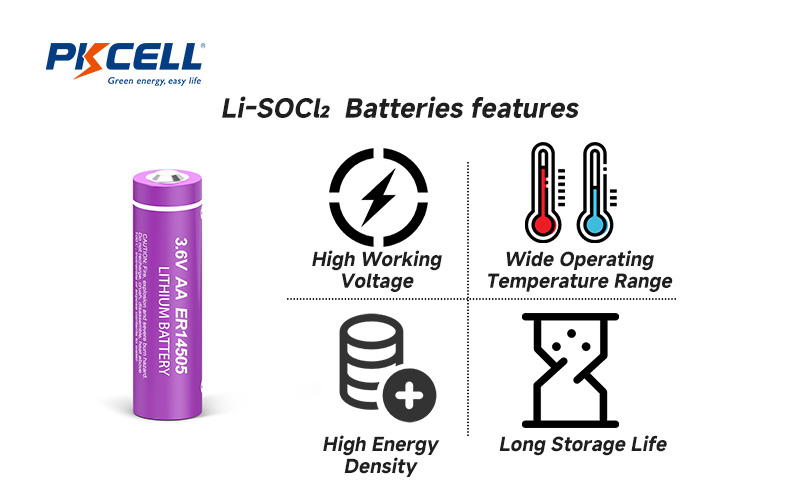
Lithium Manganese Dioxide (Li-MnO₂) Batteries
Lithium Manganese Dioxide batteries offer a balance between lifespan and high pulse current performance. These batteries support short bursts of high current, making them suitable for tracking devices that periodically transmit data or use power-intensive sensors. While their overall lifespan is shorter than Li-SoCl₂ cells, they provide better performance under sudden load conditions.
Models like CR123A and CR2 are common in these applications. Their temperature tolerance is somewhat narrower, but still adequate for most standard environments.
Quote for PKCell LiMnO2 Battery
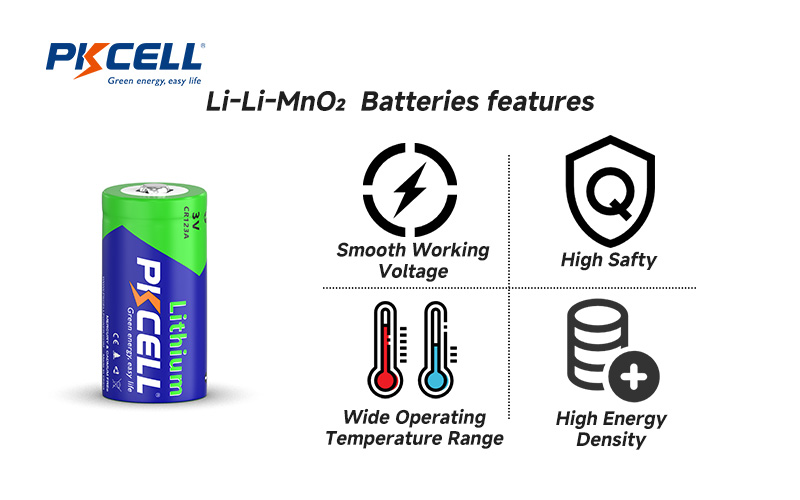
Lithium-Ion Rechargeable Batteries
Rechargeable lithium-ion batteries, such as the 18650 or custom packs, are becoming increasingly popular in tracking devices equipped with accessible charging methods—solar panels are the most common. These batteries can deliver high current and recharge repeatedly, reducing the need for battery replacement entirely.
However, lithium-ion cells have limitations including a shorter total lifespan measured in charge cycles, sensitivity to extreme temperatures, and higher self-discharge rates compared to primary lithium chemistries. They are best suited for devices where recharging infrastructure is reliable.
Quote for PKCell Lithium-ion Battery
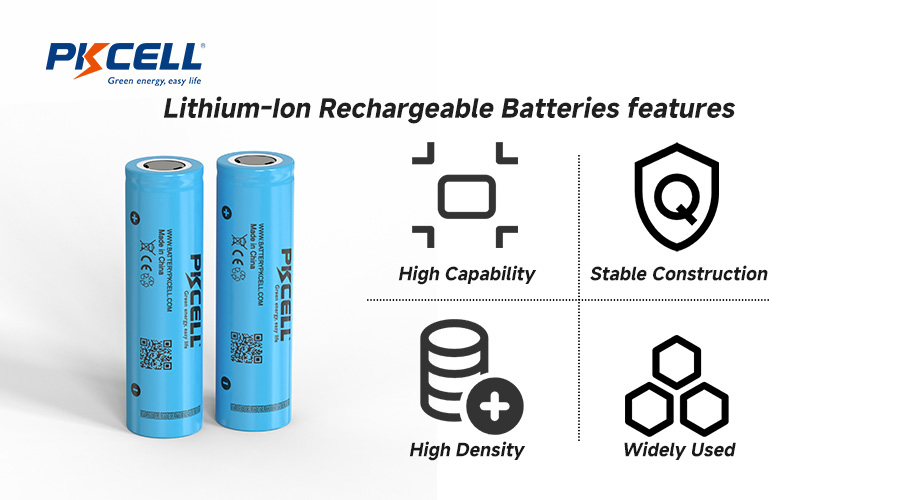
Industry-Specific Applications
Fleet Management & Asset Tracking
In fleet management, tracking devices powered by long-life lithium batteries reduce truck downtime caused by frequent battery swaps. Reliable batteries ensure continuous vehicle monitoring, enabling fleet managers to optimize routes, improve safety, and reduce operational costs. Long-lasting Li-SOCl₂ batteries are particularly favored for their maintenance-free nature and broad temperature tolerance, critical for vehicles operating in diverse climates.
Cold Chain Logistics
Cold chain logistics demand batteries that perform under freezing and sub-zero conditions to monitor refrigerated shipments effectively. Lithium Thionyl Chloride batteries excel here because their chemistry remains stable at very low temperatures, ensuring uninterrupted data flow and temperature accuracy. This reliability protects sensitive cargo, reduces spoilage, and ensures compliance with regulatory requirements.
Agriculture & Wildlife Monitoring
Agriculture and wildlife tracking often involve devices deployed in remote areas for extended periods. Long-life lithium batteries with wide temperature tolerance are essential to power GPS collars and sensors through harsh conditions and limited maintenance access. The batteries must reliably operate through seasonal temperature swings, providing consistent data for livestock management or conservation efforts.
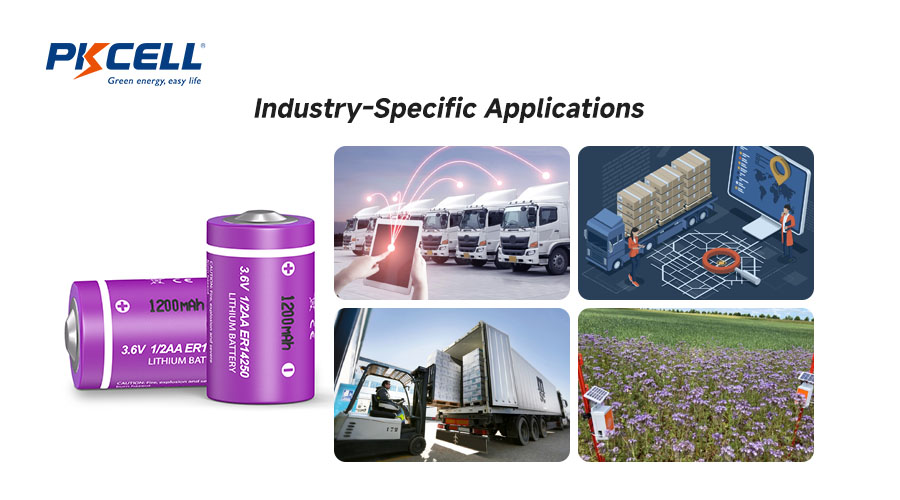
How to Choose the Best Lithium Battery for Your Tracking Device
Match Chemistry to Application
Choosing the right battery chemistry starts with understanding your device’s power profile. Low-drain devices that transmit infrequently benefit most from Li-SOCl₂ batteries, which offer exceptional longevity and minimal maintenance. In contrast, devices with frequent or high-power transmissions may require Li-MnO₂ batteries or rechargeable lithium-ion packs to handle the current bursts efficiently.
Consider Regulatory & Safety Standards
When selecting batteries for commercial use, compliance with regulatory standards like UN38.3 (transportation safety), RoHS (environmental), and UL certifications is critical. These certifications not only ensure safe operation but also simplify global shipping and deployment logistics.
Evaluate Total Cost of Ownership
While upfront cost is important, the total cost of ownership (TCO) should guide your choice. Cheaper batteries with shorter lifespans might lead to more frequent replacements, increased labor, and device downtime. Investing in high-quality lithium chemistries reduces these hidden costs and delivers better value over the long term.
PKCELL’s Lithium Battery Solutions for Tracking Devices
PKCELL offers a comprehensive range of lithium batteries tailored for tracking devices. Our Li-SOCl₂ cells, such as ER14250 and ER34615, are engineered for ultra-long life and stable voltage. PKCELL also provides customizable battery pack solutions, including rechargeable lithium-ion packs, allowing clients to tailor capacity and form factors to their unique requirements. Detailed datasheets and technical specifications are available to support engineering decisions, and B2B inquiry options enable bulk purchasing with flexible terms.
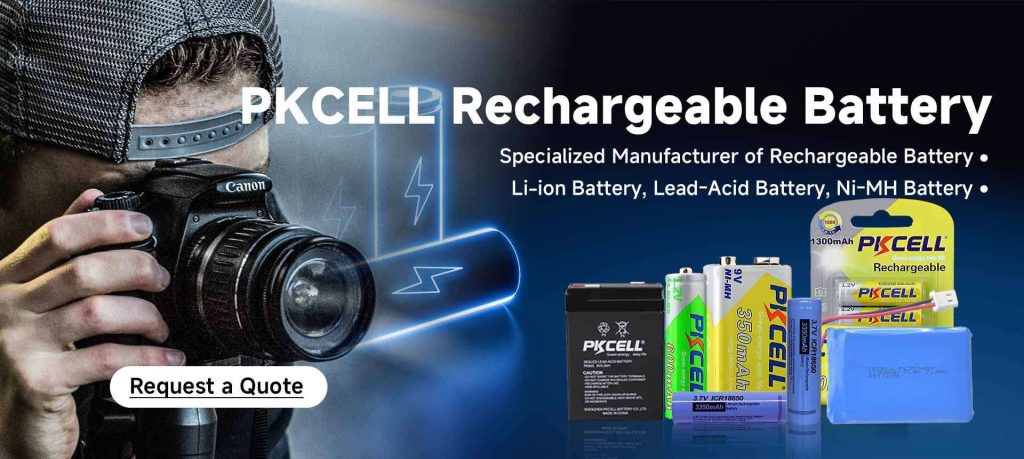
Wnioski
Choosing the right lithium battery is a cornerstone for the success of any tracking device. The combination of long operating life, wide temperature tolerance, compact size, and matching chemistry to device requirements ensures uninterrupted operation and lowers total cost.
For engineers and procurement managers seeking reliable lithium battery solutions, PKCELL offers a diverse portfolio backed by technical expertise and customization capabilities. Contact PKCELL today to request datasheets, technical support, and bulk pricing options to power your tracking devices!
FAQ: Common Questions About Batteries for Tracking Devices
Q1: How long can lithium batteries typically power a GPS tracker?
A: Depending on the chemistry and device power profile, lithium batteries like Li-SOCl₂ can last 5 to 10 years, while Li-MnO₂ batteries last around 3 to 5 years. Rechargeable lithium-ion batteries depend on charge cycles but often last 2 to 5 years with proper maintenance.
Q2: Can lithium batteries work in extremely cold environments?
A: Yes, Li-SOCl₂ batteries perform well at temperatures as low as -55°C, making them ideal for cold chain logistics and outdoor trackers in harsh climates.
Q3: What is the difference between primary and rechargeable lithium batteries?
A: Primary lithium batteries are non-rechargeable with longer shelf life and lower self-discharge rates, while rechargeable lithium-ion batteries can be charged many times but generally have shorter overall lifespans and require charging infrastructure.
Q4: What certifications should I look for when choosing batteries?
A: Look for UN38.3 for safe transportation, RoHS compliance with environmental standards, and UL or IEC certifications for safety and quality assurance.

 Bateria litowa ładowana przez USB
Bateria litowa ładowana przez USB
